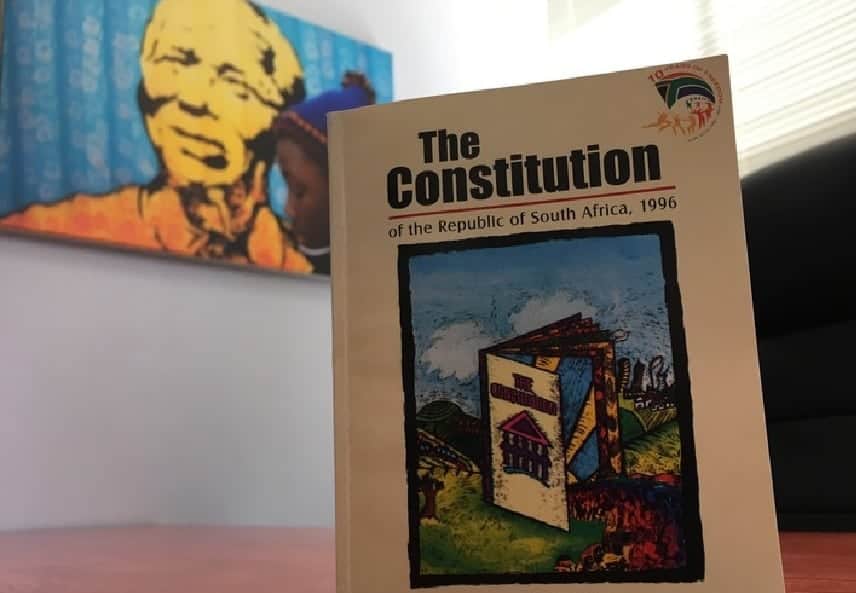How to Reference the South African Bill of Rights in Harvard Style?

How to reference the South African Bill of Rights in Harvard Style?
To reference the South African Bill of Rights in Harvard style comprehensively, it’s essential to understand each component of the citation. Harvard referencing involves providing enough details so readers can locate the original source. Below, we’ll elaborate on each part of the reference for the South African Bill of Rights:
Title of the Document
- The title should be precise, reflecting the exact wording as it appears in the document. For legal texts like the Bill of Rights, this accuracy ensures respect for the document’s formal status and facilitates easier location by the reader.
Year of Publication
- The year indicates when the document was published or last officially amended, providing context for the version of the document you’re referencing. In legal and scholarly work, the publication year is crucial for understanding the historical context and applicability of the information.
Source
- The source details where the document can be accessed. This includes a URL for online sources or a publisher and location for printed materials. Providing a complete URL and the date of access is particularly important for online sources, as URLs can change.
Access Date
- Including the date when you accessed the document is crucial, especially for online resources, to indicate the timeliness of your reference.
Examples Expanded:
- Online Source:
- South Africa. (1996). Constitution of the Republic of South Africa: Bill of Rights. Available at: https://www.gov.za/documents/constitution/chapter-2-bill-rights (Accessed: 21 March 2024).
- This citation format is used for online sources where the document is directly accessed through a government or official website. The URL leads to the specific section or document, and the access date reflects when the document was last consulted.
- Print Source:
- South Africa. (1996). Constitution of the Republic of South Africa, 1996: Bill of Rights. Pretoria: Government Printer.
- For printed versions, the location of the publisher (Pretoria) and the publisher’s name (Government Printer) are included. This format is suitable for referencing hard copies of the document.
Detailed Components Explained:
- Author/Organisation: Here, “South Africa” serves as the corporate author, indicating the national government’s role in authoring the document.
- Year: The year of the Constitution’s adoption (1996) is crucial for identifying the version of the Bill of Rights being referenced.
- Title: Italicised to stand out as the title of a significant work, providing clear identification of the document.
- Publisher/Source: Distinguishes between accessing the document online or in print, with specifics to guide the reader to the source.
- Access Date: Especially for online references, indicating when the document was accessed acknowledges the potential for future changes to the document’s online location or content.
When crafting a reference, ensure each part is clearly presented, allowing others to trace your sources accurately. This detailed approach not only adheres to Harvard style conventions but also supports academic integrity and respect for legal documents.
FAQs
How to Reference or Cite the South African Constitution in Harvard Style
To reference the South African Constitution in Harvard style, you would format it as follows:
In-text citation: (Republic of South Africa, 1996)
Reference list: Republic of South Africa. 1996. The Constitution of the Republic of South Africa Act 108 of 1996. Pretoria: Government Printer.
Is the South African Constitution Written or Unwritten?
The South African Constitution is a written constitution. It is a formal document that outlines the structure of government, the rights of citizens, and the laws of the country.
Where Can I Download the Constitution of South Africa?
You can download the Constitution of South Africa from the official South African Government website or from the Constitutional Court of South Africa website. Here is a link to the government’s page: Constitution of South Africa.
Who Drew the South African Constitution?
The South African Constitution was drafted by the Constitutional Assembly, which included representatives from various political parties. Key figures included Nelson Mandela, Cyril Ramaphosa, Roelf Meyer, and other prominent leaders who played significant roles in the negotiation and drafting process.
How Do You Cite the Interim Constitution?
To cite the Interim Constitution in Harvard style:
In-text citation: (Republic of South Africa, 1993)
Reference list: Republic of South Africa. 1993. The Constitution of the Republic of South Africa Act 200 of 1993. Pretoria: Government Printer.
How Do You Cite a Parliamentary Document?
To cite a parliamentary document in Harvard style, follow this format:
In-text citation: (Author, Year)
Reference list: Author. Year. Title of Document. Report number (if available). Place of publication: Publisher.
Example: In-text citation: (South African Parliament, 2020)
Reference list: South African Parliament. 2020. Annual Report 2020. Cape Town: Government Printer.
Is it Necessary to Cite the Constitution?
Yes, it is necessary to cite the Constitution when referring to specific sections, clauses, or legal principles derived from it. Proper citation ensures credibility and accuracy in legal and academic writing.
When Referring to the Constitution of 1996, Is It Necessary to Cite the Constitution as the Constitution of the Republic of South Africa Act 108 of 1996?
Yes, when referring to the Constitution of 1996, it is necessary to cite it as the Constitution of the Republic of South Africa Act 108 of 1996. This provides the specific legal reference and context for the document being cited.
